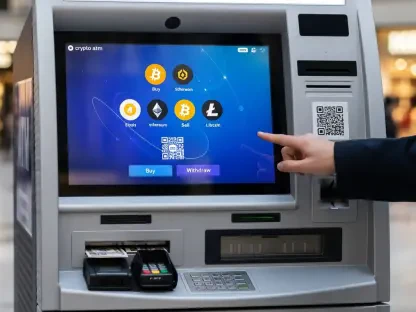The convergence of eCommerce and physical retailing is reshaping the landscape of the shopping experience. With digital convenience dominating practical shopping experiences, consumers now seek unique and engaging encounters from brick-and-mortar stores that online shopping cannot provide. Consequently, retailers are being driven to innovate and transform their physical locations into experiential spaces that offer more than just a place to buy products, aiming to create memorable in-store experiences that keep customers coming back.
Experiential Retail Demands
Consumers expect physical stores to offer engaging experiences that are unattainable online. This demand is leading retailers to focus on creating interactive and immersive shopping environments. Retailers are now investing heavily in technology and design to make their stores more appealing and engaging to modern shoppers. This includes integrating augmented reality (AR) displays, organizing in-store events, and providing personalized customer service to enhance the overall shopping experience. The focus is on making every visit to a physical store a unique and memorable occasion that cannot be replicated online.
Foot Locker’s ‘Store of the Future’ is a prime example of this trend. Announced on April 24 in Wayne, New Jersey, Foot Locker’s new store concept embodies this shift towards experiential retail. The store’s layout is meticulously designed to facilitate easy product discovery and navigation, with designated sections for new releases and trending products placed near the entrance to capture the attention of shoppers. The aim is to enhance storytelling around the brand and seamlessly integrate digital capabilities to improve employee efficiency. Foot Locker’s President and CEO, Mary Dillon, has emphasized that this cutting-edge shopping experience reinforces Foot Locker’s leadership position in sneaker culture.
Omnichannel Retail Strategy
Physical stores are evolving into integral components of a broader omnichannel strategy, acting as essential touchpoints for customer engagement. These stores allow consumers to experience products firsthand and engage physically with the brand. Retailers are adapting their physical spaces to focus more on experiential elements rather than solely on product displays. Some, such as Best Buy, are even reducing store sizes and redesigning their spaces to provide a more streamlined in-person shopping experience that complements their online presence.
Best Buy’s CEO, Corie Barry, has highlighted the company’s shift towards digital shopping, which has consequently led to less reliance on in-store inventory display. The company aims to refresh every store to improve merchandising and to make shopping easier for customers. Similarly, Walmart’s ‘Store of the Future’ concept integrates interactive technology to seamlessly blend online and in-person shopping experiences. These changes reflect a broader trend in retail where physical stores become destinations for unique experiences and play a vital role in an omnichannel strategy, enhancing the overall customer journey.
Community Hubs and Customer Engagement
Physical stores are evolving into community hubs where retailers host events, workshops, and demonstrations to foster a local sense of community and encourage repeat visits. For example, Buybuy Baby organizes regular in-store events aimed at engaging customers with hands-on experiences. These events include store openings and activities such as registry-building, often incorporating giveaways to attract more shoppers. By adopting this approach, retailers not only drive foot traffic but also build brand loyalty and cultivate a stronger sense of community among their customers.
Retailers are also leveraging these community hubs to gather valuable customer feedback and insights. By hosting events and engaging directly with customers, retailers can better understand their needs and preferences. This information is crucial for continuously improving products, services, and the overall customer experience. The rise of the click-and-mortar shopper further emphasizes the importance of these community hubs. According to the PYMNTS Intelligence study “2024 Global Digital Shopping Index: U.S. Edition,” one in three U.S. consumers are now Click-and-Mortar shoppers, utilizing both digital tools and physical store visits during their purchasing journey.
The Rise of AI-Driven Cyber Threats
As physical retailers innovate to meet new consumer demands, the rise of AI is concurrently transforming the cybersecurity landscape, posing new challenges and threats. The utilization of artificial intelligence in cybercrime is alarmingly on the rise, with companies like eBay and British insurer Beazley reporting an increase in fraudulent emails targeting corporate executives. These emails often exploit personal details harvested through AI analysis of online profiles, making them startlingly convincing and difficult to detect.
AI’s ability to amass and analyze large quantities of personal information enables cybercriminals to design highly targeted phishing scams. By mimicking an individual’s or company’s communication style and tone, AI can craft fraudulent messages that appear genuine, deceiving recipients with greater efficiency. Cybersecurity experts have warned that as AI technology becomes more sophisticated, the volume and precision of cyberattacks are likely to escalate. AI is expected to aid in various types of cyber threats, including ransomware, zero-day exploits, and supply chain attacks, making it imperative for businesses to continuously bolster their defenses.
Corporate Responses to Cyber Threats
In response to the escalating threat landscape, companies are increasingly turning to AI-powered cybersecurity measures to defend against advanced threats. The PYMNTS Intelligence report “The AI MonitorEdge Report: COOs Leverage GenAI to Reduce Data Security Losses” indicates that 55% of companies now employ AI-driven security tools, a dramatic increase from 17% earlier in the year. These advanced tools assist in the rapid detection and accurate response to threats, offering a significant advantage over traditional methods.
Despite significant technological advancements, the importance of human vigilance in combating cyber threats remains undeniable. Training employees to recognize phishing tactics and regularly updating them on evolving threats are essential components of a robust cybersecurity strategy. Simulated real-world attack scenarios can further enhance an organization’s preparedness and resilience. While AI empowers cybercriminals, it also provides substantial defense opportunities for corporations. AI’s capabilities in threat detection and response can significantly enhance a company’s security posture, ensuring they are better equipped to protect against sophisticated cyberattacks.
Conclusion
The merging of eCommerce and traditional retail is transforming how people shop. With the ease of digital shopping taking over, consumers now want experiences from physical stores that they can’t get online. This shift means retailers need to get creative, turning their brick-and-mortar stores into engaging places that do more than sell products. The goal is to create memorable experiences that draw customers back again and again. Retailers are focusing on making in-store shopping not just about buying but about enjoying the visit, often incorporating elements like interactive displays, personalized services, and exclusive events. These unique experiences, coupled with the convenience of online shopping, are redefining the retail space. The emphasis is on blending the efficiency of eCommerce with the tangible and emotional aspects of physical stores, ensuring that the act of shopping becomes a holistic and gratifying activity. This transformation is essential for retailers to stay competitive and relevant in a market where consumers have endless online options at their fingertips.









